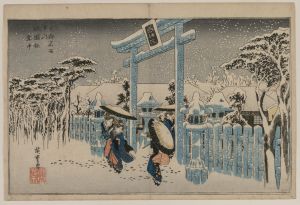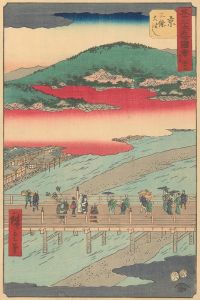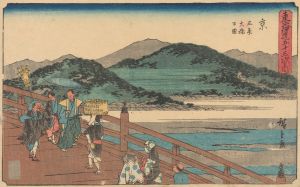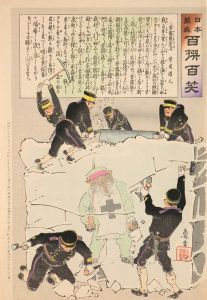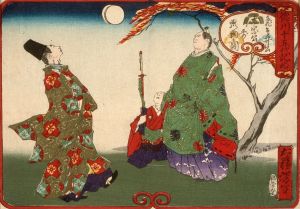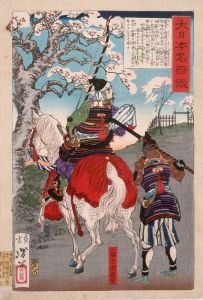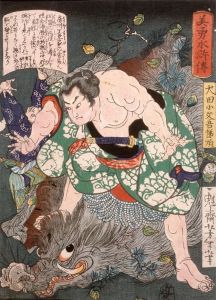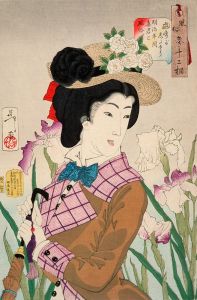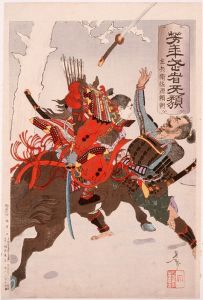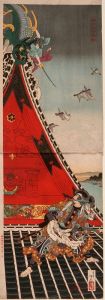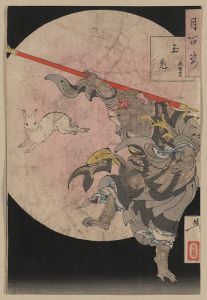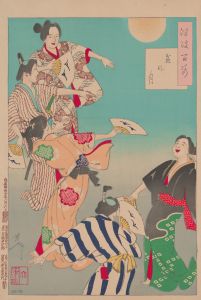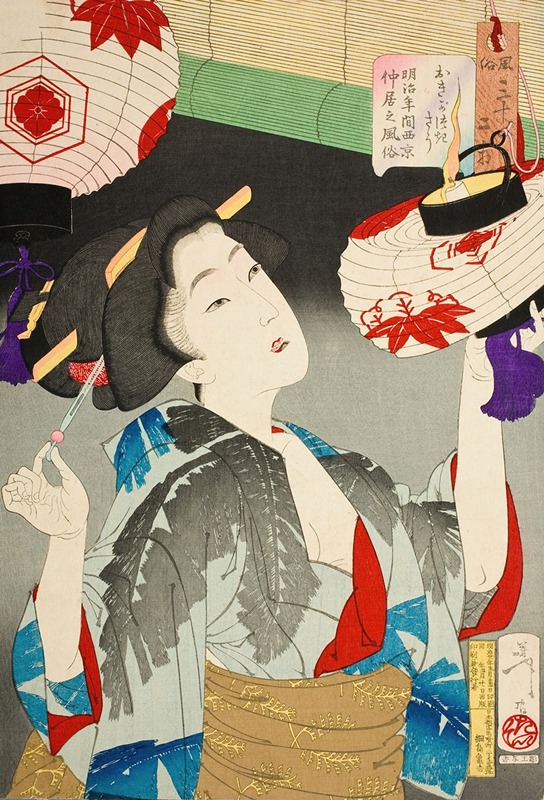
Looking Observant; The Appearance of a Kyoto Waitress of the Meiji Era
A hand-painted replica of Tsukioka Yoshitoshi’s masterpiece Looking Observant; The Appearance of a Kyoto Waitress of the Meiji Era, meticulously crafted by professional artists to capture the true essence of the original. Each piece is created with museum-quality canvas and rare mineral pigments, carefully painted by experienced artists with delicate brushstrokes and rich, layered colors to perfectly recreate the texture of the original artwork. Unlike machine-printed reproductions, this hand-painted version brings the painting to life, infused with the artist’s emotions and skill in every stroke. Whether for personal collection or home decoration, it instantly elevates the artistic atmosphere of any space.
Tsukioka Yoshitoshi was a prominent Japanese artist known for his work in ukiyo-e, a genre of woodblock prints and paintings that flourished in Japan from the 17th through the 19th centuries. Yoshitoshi is often celebrated for his innovative approach to traditional subjects and his ability to capture the complexities of human emotion and experience. One of his notable works is "Looking Observant; The Appearance of a Kyoto Waitress of the Meiji Era," which reflects his interest in depicting contemporary life and society during a time of significant cultural transformation in Japan.
The Meiji Era (1868-1912) was a period of rapid modernization and Westernization in Japan. This era saw the country transition from a feudal society to a more modern, industrialized nation. During this time, traditional Japanese customs and roles were both preserved and transformed, and Yoshitoshi's work often explored these themes. In "Looking Observant," Yoshitoshi captures the essence of a Kyoto waitress, a figure that would have been familiar to many during the Meiji period. Kyoto, known for its rich cultural heritage, was a city where traditional Japanese arts and customs were particularly valued, even as the country embraced new influences.
Yoshitoshi's depiction of the waitress is notable for its attention to detail and its ability to convey a sense of personality and presence. The waitress is portrayed with a keen sense of observation, suggesting her awareness and attentiveness, qualities essential for her role. The artwork reflects Yoshitoshi's skill in rendering human figures with a sense of realism and individuality, a departure from the more stylized representations typical of earlier ukiyo-e works.
The composition of the piece likely includes elements that highlight the waitress's attire and surroundings, providing insight into the fashion and environment of the time. Traditional clothing, such as the kimono, would have been a key aspect of her appearance, and Yoshitoshi's work often paid careful attention to the patterns and textures of such garments. This focus on clothing not only adds visual interest but also serves as a historical record of the period's fashion.
Yoshitoshi's work during the Meiji Era is characterized by a blend of traditional Japanese aesthetics and new artistic influences. He was known for experimenting with Western techniques, such as perspective and shading, which he incorporated into his prints to create a more dynamic and lifelike effect. This synthesis of styles is evident in "Looking Observant," where the use of light and shadow may enhance the three-dimensionality of the figure.
Overall, "Looking Observant; The Appearance of a Kyoto Waitress of the Meiji Era" exemplifies Tsukioka Yoshitoshi's ability to capture the spirit of his time while maintaining a deep respect for traditional Japanese art forms. His work provides valuable insights into the cultural and social dynamics of the Meiji period, offering viewers a glimpse into the lives of individuals navigating a rapidly changing world. Through his art, Yoshitoshi not only documented the appearance of people from his era but also conveyed their inner lives and the broader societal shifts occurring around them.





